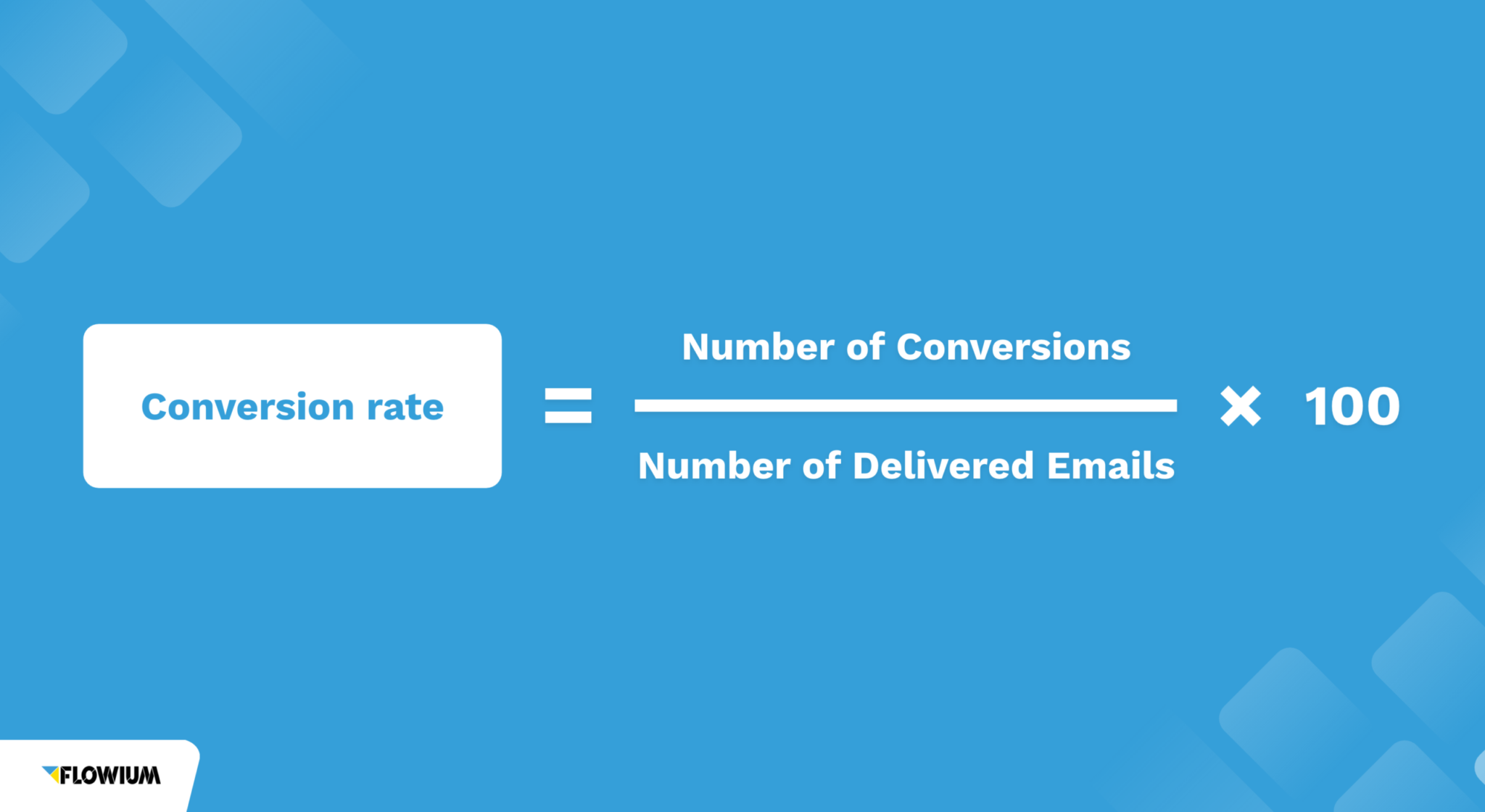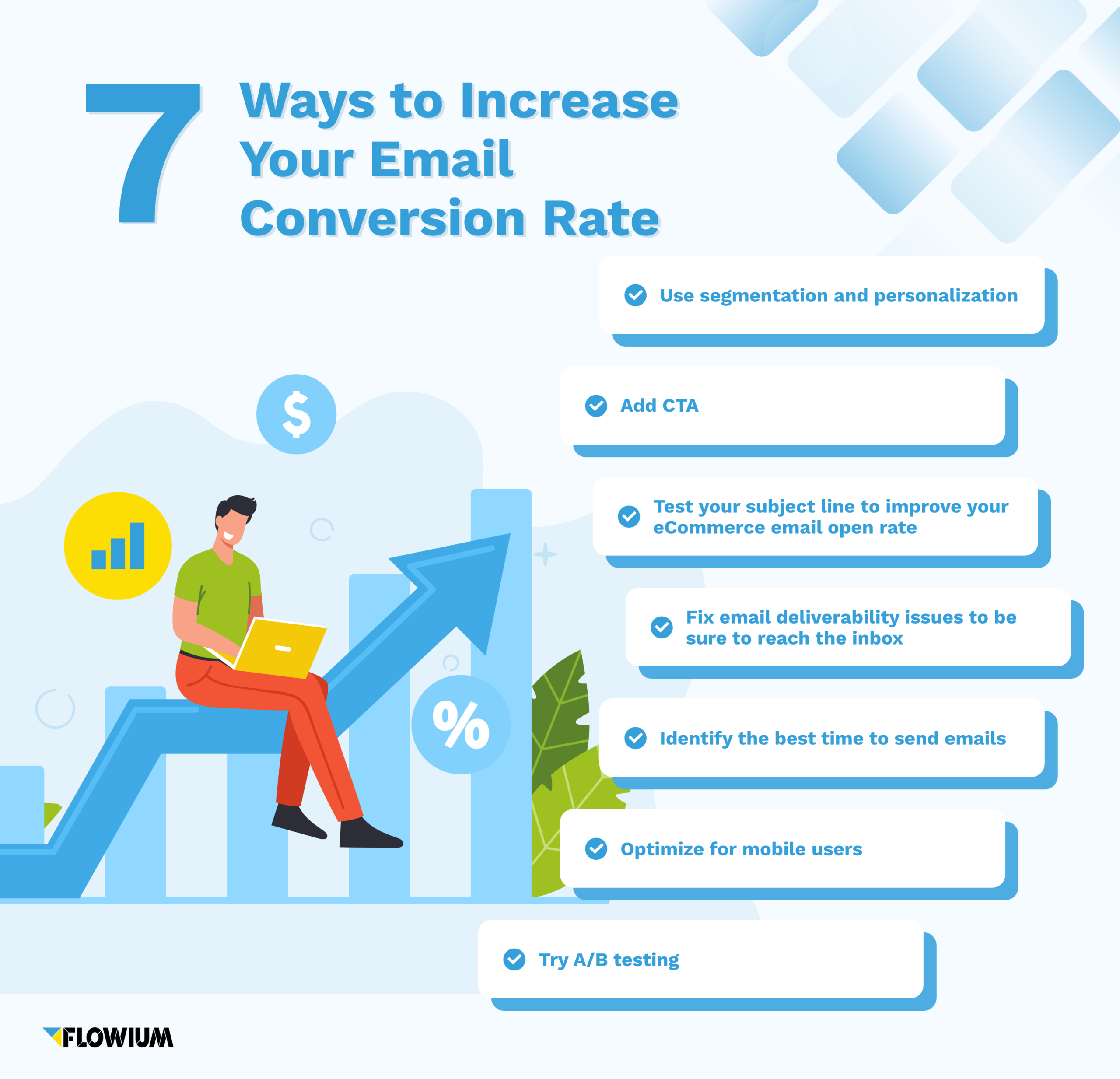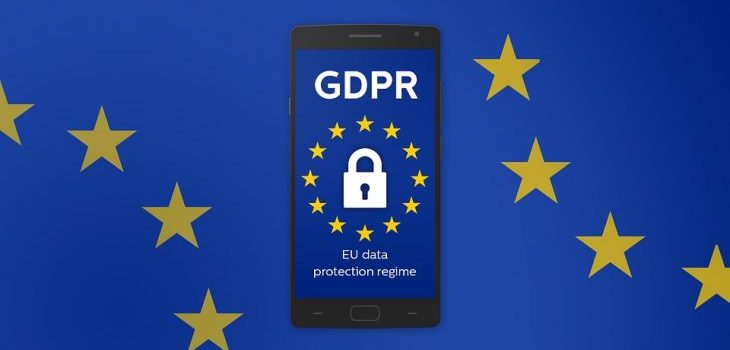The majority of progressive business owners and professional marketing teams already employ email marketing as one of the main tools to increase traffic and revenue. However, even though this instrument is, undoubtedly, effective, it requires a thorough execution and constant enhancement of strategies to bring results. Especially, in the world where it’s becoming more and more difficult to capture the interest of your subscribers, businesses need to double the effort. To know exactly what to revise and change, you have to always keep track of your KPIs such as open rates, CTR, and conversions. In one of our previous articles, we’ve explored the best ways to improve click-through rates, so you can check it out.
Here, we’ll look into email conversion rates and their importance for your campaign success and ROI. We’ll cover all you need to know about this KPI in this guide, including what they are, why they matter, and how to track them. Examine your email campaigns more closely and read this article to determine how to raise your email conversion rate.
What is Email Marketing Conversion Rate?
Usually, you want your subscribers to do a certain action after receiving an email campaign. Depending on the goal of your campaign, it could include anything from downloading one of your free guides that you use as a lead magnet to placing an order in your online store.
An email conversion occurs only when receivers actually complete that action. We emphasize “complete” because the meaning of email conversion rate is often confused with click-through rates. Both measure the percentage of people who click on CTAs and links in email, which is basically means they react and engage, but it counts as a conversion only when they do the action.
Example: When sending an abandoned cart email, you place “View my order” or “Return to cart” as the main CTA, which will bring clients back to their carts with products. In this case, clicking on this button will count for both CTR and conversion rate, since viewing the order in the cart is the goal action, and it was completed.
Another scenario is when you place “Checkout Now” or “Buy Now” as your main CTA. In this case, for it to count as a conversion, a customer really has to buy a product from their cart from the email. If they click on the CTA, but don’t complete the action of purchasing, it won’t be a conversion.
Summing up, the percentage of recipients on your list that clicked on the email and completed the goal action is known as the email conversion rate.
What is Ecommerce Email Conversion Rate?
For ecommerce firms, email marketing has become one of the most powerful tools to bring sales. They need to know about this KPI more than everyone else since most of their campaigns are aimed at direct conversions from online channels.
The percentage of receivers that complete a purchase after clicking on a link or call-to-action in an email campaign sent by an ecommerce company is known as the ecommerce email conversion rate. This measure is crucial for determining how well email marketing campaigns are generating sales. The quality of the email content, the offer’s relevancy to the receiver, the email’s timeliness, and the general efficacy of the ecommerce website in turning visitors into buyers are just a few examples of the variables that can significantly affect the conversion rate. Email conversion rates for ecommerce typically fall between under 1% and 5%, though they can vary based on a number of factors.
How to Calculate Email Conversion Rate
You’ll need to consider a few factors to know what activities to monitor and how to calculate email marketing conversion rate for your company.
Determining your conversion rate is quite easy if your firm is an online retailer; many opt to use completed sales as their ecommerce email conversion rate measure. However, businesses in other industries might have difficulties with figuring out where to start.
Regardless of your line of work, you can calculate your email conversion using metrics other than a successful transaction. Measuring your micro and macro conversions is an option.
- Small actions a subscriber performs after getting your email are known as micro conversions. It could be completing a form, putting something to a cart, or clicking a link. Although these activities might not result in a sale right away, they are nonetheless crucial milestones in the conversion process.
- An activity that is larger and more significant that results in a sale or other significant outcome is called a macro conversion. Making a purchase in the context of an online store is a prime illustration of a macro conversion.
Although achieving macro conversions is always the ultimate goal, monitoring micro conversions can help you understand how recipients interact with your emails. You’ll be able to gauge the true effectiveness of your email marketing approach when you monitor both.
How to Calculate Conversion Rate in Email Marketing
It’s really easy to figure out your conversion rate if you have all the necessary variables. For the starters, you need to collect the performance data from reports in your email marketing platform. This includes the number of successfully delivered email and the number of total conversion. Remember to use the accurate email number when calculating your email marketing conversion rates. You’ll need to exclude bounced emails from the overall number of sent emails to get the accurate variable.
When you have all the needed measures, just use the email conversion rate formula.

All you have to do is take the total number of conversions, whether they are based on completed purchases, lead capture, or something else, and divide that by the total number of delivered emails. Then, multiply the number that you get by 100 to get a percentage.
For example, if an email was sent to 10,000 people and there were 500 conversions, your conversion rate would be 5% as 500 / 10,000 * 100 = 5.
Is it low or high, though? Let’s see.
What is the Average Conversion Rate for Email Marketing?
The average conversion rate for email marketing will vary depending on your industry, target audience, and level of engagement with your subscribers. Therefore, each business will have their individual statistical curve for this rate. To give you more insights into the common numbers that can be your beacon to orient on, we can take a look at the statistics provided by Klaviyo, one of the most powerful tools in the industry. From the Email marketing benchmarks 2024 report by Klaviyo, we can see that the average email conversion rate is 0.09% for campaigns across all industries. When we look at the results by industries, they have overall similar numbers.
- Clothing & Accessories – 0.08%
- Automotive – 0.06%
- Electronics – 0.05%
- Food & Beverage – 0.18%
- Health & Beauty – 0.12%
- Home & Garden – 0.06%
- Office Supplies – 0.09%

Using automated flows can bring your average email marketing conversion rate up to 1.71%. The rates are also higher when we look at them by industry. Here are some numbers from businesses that use automations.
- Clothing & Accessories – 1.77%
- Food & Beverage – 1.99%
- Hardware & Home Improvement – 1.67%
- Health & Beauty – 1.62%
- Home & Garden – 1.65%
- Jewelry – 1.48%
- Mass Merchant – 1.31%
- Office Supplies – 1.74%
- Specialty – 1.69%
- Sporting Goods – 1.77%
- Toys & Hobbies – 1.81%
What is a Good Conversion Rate for Email Marketing?
There is actually no one-size-fits-all answer to this question. It will also vary depending on the type of campaign you’re sending, your line of work, market, and more factors. Ultimately, a good email conversion rate is one that’s higher than your average one. Again, some insights we can get from the mentioned Klaviyo report.
- For typical campaigns, top performers get a rate of 0.47%.
- For those who use automated flows, a good conversion rate for email marketing is 5.71%.
As you see, most businesses get what seems to be low on paper, but actually alright for their bank accounts. So, regarding this matter, you need to analyze each individual case and campaign results to see if they profit you.
Why Track Email Conversion Rates
A basic method for assessing the effectiveness of your email marketing plan is to track your email conversion rate. Your conversion rate should ideally increase or remain constant. This informs you of the success of your strategy.
Why does it matter so much?
- Engagement. Mostly because it provides you with the number of individuals who act upon opening your emails.
- Progress Monitoring. It indicates whether your email marketing plan is increasing your revenue.
- Performance Evaluation. Monitoring your email conversion rates might also assist you in identifying the less successful campaigns. Understanding this will enable you to maximize your approach and achieve the greatest outcomes.
- ROI. Email campaigns’ return on investment (ROI) is based on your email conversion rates. You can determine which campaigns are making the most money by monitoring their conversion rates. You can then concentrate your efforts where they will have the most effect.
The last point need a little more clarification, in our opinion, since it’s where the underwater stone lies—high conversion rate doesn’t always equal high ROI in email marketing.
For instance, if you send a sunset flow campaign that consisted of 5 emails and 1 of those emails bounced, the total number of emails delivered would be 4. Moreover, if 2 subscribers out of those 4 emails accomplish the objective you set for the email campaign, then you have 2 conversions. After entering all of this information into our formula, we get a 50% conversion rate for email marketing, which looks great, but… Will it give your business a desired revenue? Not necessarily. Maybe in a long run it can potentially turn into profit, but not from this particular campaign.
Let’s look at another example to give you more understanding about the connection between email conversion rates and ROI.
Consider this scenario: You could segment one individual who you’re confident will make a purchase, resulting in $100 revenue and a perfect 100% conversion rate. Alternatively, you could send the campaign to 100 people, leading to 3 purchases and $300 revenue, but with a lower 3% conversion rate. Which outcome would you prefer? Naturally, the second scenario would be more favored.
What we emphasize is that as a business owner you shouldn’t focus on getting high percents of conversion rates alone but see the bigger picture and rely on the experience of professional marketers like Flowium. Depending on the type of campaign and its goals, 0.5% conversion rate might bring you more money than 15%.
How to Track Email Marketing Conversion Rates
- Email Marketing Analytics
If your email marketing approach is really taking off, you’re either using email marketing software already or have it planned. This is the ideal instrument to monitor the stats of your email campaign. Analytics are a feature of all decent email marketing software that may give you a lot of information about each and every campaign you send to your email list. For every email campaign, these statistics will show KPIs like click-through and open rates. This will enable you to see your campaigns’ performance in a more thorough manner. The ideal tool that we recommend choosing is Klaviyo, but its alternatives are also sufficient in this department.
- Web Analytics
You can measure your email conversions with Google Analytics, despite the fact that you might believe it is solely a tool for monitoring the performance of your website. You have to build up conversion targets and combine it with your email marketing program in order to achieve that. The action you want your subscribers to do on your website once they get your email is known as a conversion goal. Let’s take an example where you wish to send out an email newsletter to your subscribers about a new product. Instead of showing you how many people clicked on the link in your email campaign, Google Analytics will in this instance show you how many individuals actually completed the transaction. This method of tracking conversions goes one step further by enabling you to determine whether the subscriber who accessed your email and clicked on the link made the purchase (a macro conversion).
How to Improve Email Marketing Conversion
Straightforward as it is, you’re losing money if your email conversion rate is low compared to the average rates in your industry and competitors. Fortunately, there are a few strategies you can use to optimize the performance of your email campaigns and improve email conversions.
The 10 best strategies to accomplish that are listed in this section.

1. Use segmentation correctly
Your subscribers receive tons of emails every day. The best way to grab their attention and compel them to take action on the emails they receive from you is through segmentation and personalization.
By breaking up your subscriber base into more manageable, focused groups according to predetermined standards like behavior, preferences, purchase history, and demographics, you can achieve audience segmentation. Here’s what we recommend doing to increase email marketing conversions.
- To guarantee that you send out just the most pertinent emails, offers, and discounts, segment your audience right away.
- By breaking down your audience into several segments, you can send emails, coupons, and discounts that are specifically tailored to each group and are therefore more likely to be resonant.
- It’s critical to begin segmenting members according to the data you have accessible as soon as they sign up for your email list.
By segmenting your email list, you can send subscribers more targeted emails relevant to them, increasing chances of conversions. And you can make those campaigns even more engaging by personalizing them to each recipient.
Overall, by focusing on the correct segmentation you can raise not just email conversions but also open and click-through rates, and boost engagement.
2. Personalize
Using your sign-up forms, gather zero-party data to customize your email offers and messaging
You may effectively personalize your email marketing efforts by obtaining insightful data directly from your clients through the implementation of thorough sign-up forms. Product preferences, communication preferences, demographic data, and other data may be included in this data.
By using this information, you can personalize each recipient’s email offer and message, which boosts engagement and increases conversion rates.
3. Add clear CTA
If you want your subscribers to take and complete actions after opening your email, you have to guide them. This is why using calls-to-action in your email campaigns contributes to higher email conversion rates.
It’s important to have CTAs that are both visually appealing and straightforward since they let your subscribers know exactly what you want them to do next.
📌 Make sure your CTAs stand out by using contrasting colors, bold fonts, and compelling language that creates a sense of urgency or excitement.
4. Test your subject line
Consider what you see when you open an email in your inbox. That’s correct—a subject line.
To improve ecommerce email conversion rates, we recommend testing your subject lines. The most crucial element in encouraging subscribers to open your emails is your subject line. If it doesn’t catch their eye, they won’t even open your email, much less reply to it.
💡Get subscribers to click through and interact with your content by creating a captivating subject line. This will also help with improving the conversion rate of email marketing.
However, until you test them out, you won’t know which subject lines are most effective with your readers. You can make your subject lines more compelling and with more meaning by experimenting with different ones and seeing which ones receive the most opens and clicks.
One thing to keep in mind, though, is to avoid clickbait wording at all costs. This strategy might backfire and cause mistrust or alienation from your subscribers, despite how alluring it may seem.
5. Focus on email deliverability
The first step towards increasing email conversion rates is making sure your emails get delivered to your subscribers’ inboxes.
Since successfully delivered emails is one of the variables in the formula, you need to prevent ending up in spam folders or getting blocked from reaching your subscribers’ inboxes altogether.
Unless you’re ok with losing revenue potential, you need to make sure your emails are free from deliverability issues. Your email campaigns can be made more deliverable in a few different ways:
- Employing a trustworthy email service provider with high deliverability and reputational ratings.
- Ensuring that there are no outdated or invalid email addresses in your email list and that it is clean and current.
- Confirming subscribers using a twofold opt-in procedure to lower the possibility of fraudulent or spam email addresses.
- Steer clear of spammy layout and content, such as subject lines that are deceptive or contain all capital letters or punctuation.
6. Send emails at the best time
Increased conversion rates in email marketing can result from sending your emails at the optimal moment, when readers are most likely to open them. The appropriate period will vary depending on the kind of emails you send.
💡 By examining your email analytics, you can determine when to send particular campaign kinds.
To improve your chances of reaching your subscribers at the correct moment and find the best time to send your emails, you can also test alternative timings or use automation tools.
7. Optimize for mobile
Optimizing your emails for mobile devices is now a must. Email design that is responsive is essential in a world where an increasing number of people do everything on their phones.
Make sure all the design aspects of your email templates fit properly on the screen when you optimize them for mobile.
Make sure the text is large enough to read without zooming in, avoid using large graphics that take a long time to load, and allow enough space between buttons and links so that they can be clicked with ease.
8. Carry out A/B testing
A/B testing is a highly effective way of creating an email that helps to grow email marketing conversion.
Use it to test minor changes between email formats or phrasing to find out what your customers prefer. Then go with the version that leads to more conversions
9. Provide testimonials
To provide social proof and persuade buyers to buy, provide relevant customer reviews:
Relevant client testimonials offer insightful social proof that can support the development of credibility and trust among your target audience.
Directly using reviews in your email advertisements can reassure customers and motivate them to buy, especially when done in conjunction with offers or products that are relevant to them.
You may answer any possible worries or objections and provide recipients more incentive to act by including positive testimonials from happy clients in the body of your email. You can further encourage customers to convert by showcasing the popularity and quality of your products through the inclusion of review snippets or star ratings. All things considered, including contextual customer reviews in your email marketing can greatly affect consumers’ decisions to buy and increase conversion rates.
10. Use advanced segmentation
To make sure you’re offering your greatest bargains to your most valued consumers, segment your market based on cart value and loyalty.
Focus your marketing efforts and resources on your most valued consumers by segmenting your audience based on loyalty and cart value.
Delivering tailored incentives and offers to your most valuable clients will boost their loyalty, encourage repeat business, and eventually improve income.
High-value segments, such as devoted clients or those with large cart values, can be identified and targeted in order to customize special offers, discounts, and prizes that encourage ongoing interaction and purchases. This methodical technique optimizes the return on investment for your marketing activities while also fortifying consumer relationships.
Final Thoughts
Keeping track of your email conversion rate in 2024 and investing in its improvement are the only ways you can meet the KPI and achieve ROI goals. This measure can help you forecast client behavior more accurately and will benefit your bottom line. At the same time, monitoring your progress will help you make sure you’re choosing the best strategy to boost revenue and win over more loyal clients.
If you want excellent results, but have no specific knowledge or time to do it yourself, contact Flowium! We have an excessive experience in helping our clients achieve high email marketing conversions in all industries. You can explore our projects and see the outcomes of our professional work.







